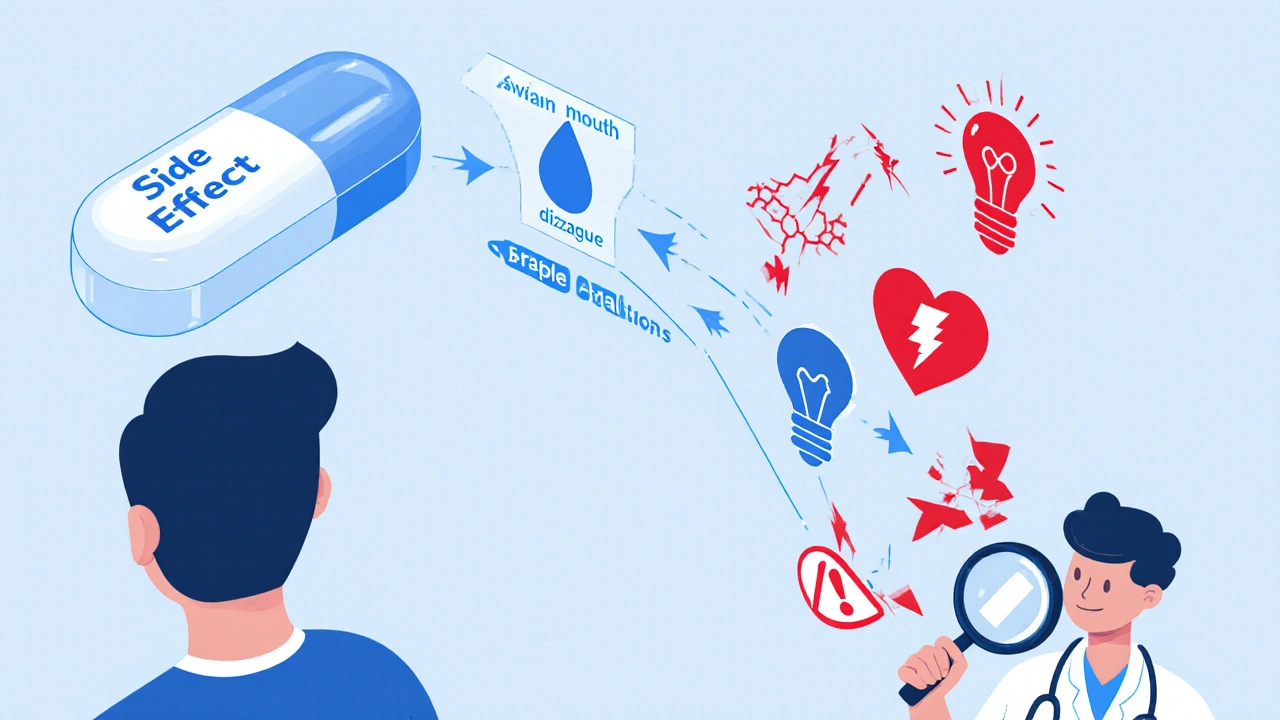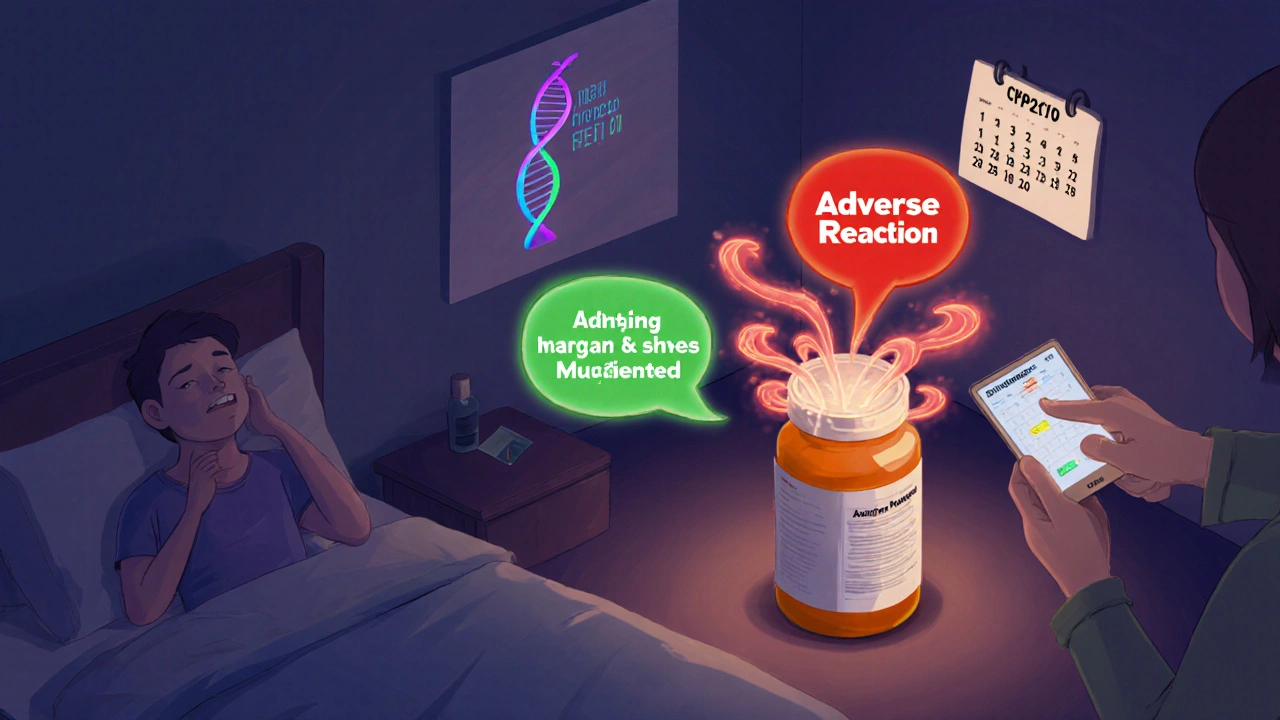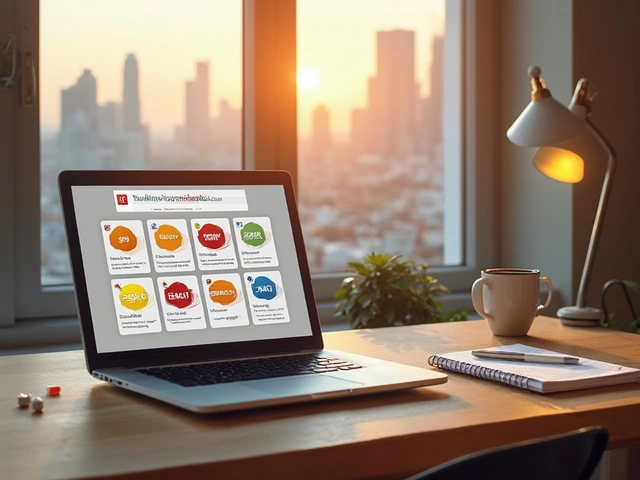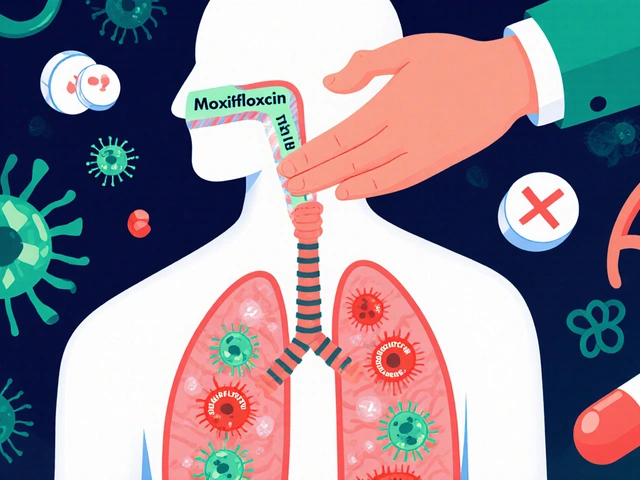The Difference Between Medication Side Effects and Adverse Drug Reactions Explained

When you start a new medication, your doctor might say, "You could experience some side effects." But what does that really mean? And if you feel sick after taking it, is it a side effect-or something worse? Many people, even some healthcare workers, use these terms interchangeably. But the difference between side effects and adverse drug reactions isn’t just semantics. It affects how you understand your risk, how doctors treat you, and even whether you keep taking a life-saving drug.
What Exactly Is a Side Effect?
A side effect is a known, predictable reaction to a drug that happens because of how the drug works in your body-not because it’s broken or misused. These are the effects you see in clinical trials, where researchers compare people taking the drug to those taking a placebo. If more people in the drug group report nausea, dizziness, or dry mouth, and the difference is statistically significant, then it’s labeled a side effect. For example, statins like atorvastatin are meant to lower cholesterol. But they also interfere with muscle cell energy production in some people. That’s why muscle pain is a documented side effect. It’s not random. It’s tied to the drug’s mechanism. About 80-85% of all adverse drug reactions fall into this category. They’re called Type A reactions: predictable, dose-dependent, and related to the drug’s pharmacology. Side effects are listed in patient information leaflets. They’re not surprises-they’re expected. And while they can be annoying, they’re often mild and manageable. Dry mouth from antihistamines? Drink more water. Fatigue from blood pressure meds? Take them at night. These aren’t reasons to stop the drug unless they’re severe.What Is an Adverse Drug Reaction?
An adverse drug reaction (ADR) is any harmful, unintended response to a medication taken at normal doses. But here’s the catch: not all ADRs are side effects. ADRs include side effects-but they also include things that are unexpected, rare, and sometimes life-threatening. Type B reactions are the scary ones. They’re unpredictable. They don’t follow the drug’s known actions. Think allergic reactions, like hives or anaphylaxis from penicillin. Or Stevens-Johnson syndrome from sulfa drugs. These aren’t dose-related. Even a tiny amount can trigger them. They’re not listed in the “common side effects” section because they’re not common at all. The World Health Organization defines an ADR as a response that’s both noxious and unintended. The key word here is causality. For something to be called an ADR, there must be evidence linking it to the drug-not just timing. That’s why doctors don’t label every bad feeling after a pill as an ADR. They look for patterns: Did it start after the drug? Did it get worse when the dose went up? Did it go away when the drug was stopped? That’s called a dechallenge-rechallenge assessment.Adverse Events: The Broadest Category
Now, here’s where things get messy. An adverse event is any negative health occurrence that happens while you’re taking a drug-whether it’s caused by the drug or not. That includes falls, heart attacks, infections, or even a migraine that started the same day you began a new medication. In a clinical trial, every bad thing that happens to a participant is recorded as an adverse event. But only some turn out to be side effects or ADRs. In a 2020 study of the blood thinner apixaban, 12.3% of people on the drug reported headaches. So did 11.8% of people on the placebo. That means headaches weren’t caused by the drug. They were just adverse events. Outside of trials, adverse events are often reported by patients or doctors without knowing if the drug caused them. This is why the FDA gets over a million adverse event reports every year-but only about one-third are confirmed as true adverse drug reactions after review.
Why the Confusion Matters
Mixing up these terms has real consequences. A 2021 survey found that 68% of healthcare professionals use “side effect” and “adverse reaction” interchangeably in medical notes. That’s dangerous. Patients hear “side effect” and assume it’s normal. But if they’re told they had an “adverse reaction” to a drug, they might think it’s life-threatening-even if it wasn’t. One study showed that 43% of patients stopped taking essential medications because they misunderstood an adverse event as a side effect. Someone might quit their blood thinner because they got a stomach ache, not realizing it was a stomach virus-not the drug. Doctors, too, can misjudge risk. If every headache or nausea is labeled a side effect, the drug might look riskier than it is. That’s what happened with the diabetes drug canagliflozin in Europe. Transient side effects were mistaken for serious reactions, contributing to its temporary withdrawal. The American Medical Association now tells doctors: use “adverse reaction” only when causality is confirmed. Use “adverse event” for anything that happened during treatment, whether related or not. Insurance companies even reject claims when this distinction isn’t clear-12% of medication-related claim denials stem from sloppy documentation.How Experts Tell the Difference
Healthcare systems that train staff to distinguish these terms see better outcomes. The University of California San Francisco uses a 3-step method:- Temporal relationship: Did the symptom start after taking the drug? How long after?
- Dechallenge/rechallenge: Did symptoms improve when the drug was stopped? Did they return when it was restarted? (This is risky and only done in controlled settings.)
- Drug profile check: Does this reaction match what’s known from databases like Micromedex or the WHO Drug Dictionary?
What You Should Do
If you’re on a new medication and feel off:- Don’t panic. Not every new symptom is caused by the drug.
- Track when it started, how long it lasts, and whether it gets worse with higher doses.
- Check the patient leaflet. Is it listed as a common side effect? If yes, it’s likely manageable.
- If it’s severe-chest pain, swelling, trouble breathing, rash-call your doctor immediately. That’s not a side effect. That’s an emergency.
- Don’t assume it’s the drug. Other causes (infection, stress, diet) are often to blame.

The Bigger Picture: Technology Is Helping
The FDA is now requiring AI tools used in drug safety monitoring to clearly distinguish between adverse events and confirmed reactions. New versions of drug databases now list over 14,000 confirmed side effects with documented links to specific drugs. Even more promising: genetic testing is starting to predict who’s at risk for certain side effects. For example, people with a specific CYP2C19 gene variant are nearly nine times more likely to have serious bleeding from clopidogrel-a true side effect, not just a random event. By 2026, the goal is to cut patient confusion about side effects in half. That means clearer labels, better education, and smarter systems that don’t let mislabeled events drive treatment decisions.Bottom Line
Side effects are known, expected, and often manageable. Adverse drug reactions include side effects-but also rare, unpredictable dangers. Adverse events are any negative occurrence during treatment, regardless of cause. Knowing the difference helps you make smarter choices. It keeps you from quitting a drug you need. It helps your doctor avoid mislabeling risks. And it keeps the whole system-from clinical trials to pharmacy shelves-working more safely. You don’t need to be a doctor to understand this. If something feels wrong, talk to your pharmacist. Ask: "Is this a known side effect? Or could it be something else?" That simple question could save your health-and maybe your life.Are side effects the same as adverse drug reactions?
No. All side effects are a type of adverse drug reaction, but not all adverse drug reactions are side effects. Side effects are predictable and dose-related, like nausea from antibiotics or drowsiness from antihistamines. Adverse drug reactions include those side effects plus rare, unpredictable reactions like severe allergies or organ damage that aren’t tied to the drug’s main action.
Can a side effect become dangerous?
Yes. Even common side effects can become serious if ignored. For example, mild muscle pain from a statin might seem normal-but if it turns into severe weakness or dark urine, it could signal rhabdomyolysis, a life-threatening condition. Always report worsening symptoms to your doctor, even if they’re listed as "common."
Why do drug labels list so many side effects?
Drug labels list every reaction seen in clinical trials-even those that happened at similar rates in the placebo group. That’s because regulators require full transparency. But just because it’s listed doesn’t mean it’s caused by the drug. Only reactions that occurred significantly more often in the drug group are considered true side effects.
If I had a bad reaction once, will I always have it?
It depends. If it was a true side effect (like dizziness from blood pressure meds), it’s likely to happen again. If it was an allergic reaction (rash, swelling, trouble breathing), you must avoid the drug forever. If it was an adverse event-like a cold that happened to coincide with starting the drug-it probably won’t return. Always get it properly evaluated before making decisions.
How do I report a reaction to the FDA?
Use the FDA’s MedWatch Form 3500. When reporting, describe what happened, when it started, and whether you stopped the drug. Don’t assume causality-just report the event. The FDA’s team will review it and determine if it’s a confirmed adverse reaction. Your report helps improve drug safety for everyone.
What to Do Next
If you’re unsure about a reaction you’re having:- Check your medication’s patient leaflet for a list of known side effects.
- Call your pharmacist-they’re trained to assess whether symptoms match known drug reactions.
- Keep a symptom journal: date, time, severity, and anything else happening around that time.
- Don’t stop a medication without talking to your doctor. Abruptly stopping some drugs can be more dangerous than the side effect.






Comments (11)
JD Mette
23 Nov 2025
This is one of those topics that gets muddy fast, but you laid it out so clearly. I’ve had patients quit their meds over a headache and later find out it was a sinus infection. It’s scary how often people assume the worst.
Olanrewaju Jeph
24 Nov 2025
Excellent breakdown. The distinction between adverse event, side effect, and adverse drug reaction is not merely academic-it directly impacts patient compliance and clinical outcomes. In Nigeria, where access to pharmacists is limited, this confusion leads to preventable morbidity. Clear terminology must be prioritized in public health education.
Dalton Adams
25 Nov 2025
Look, most people don’t realize that the FDA’s MedWatch system is basically a giant dumpster fire of anecdotal noise. Over 1 million reports a year? And only a third are even plausible? That’s like saying 70% of people who get a rash after taking ibuprofen think it’s an allergy-when it’s probably just laundry detergent. You need to understand pharmacokinetics before you panic. Also, CYP2C19 testing is the future. If you’re on clopidogrel and haven’t been genotyped, you’re basically playing Russian roulette with your coronary arteries. #PharmaNerd
Kane Ren
26 Nov 2025
Love this. So many people feel alone when they’re dealing with side effects, but knowing it’s common and manageable makes all the difference. You’re not broken-you’re just human, and your body’s reacting to something powerful. Keep going. Talk to your pharmacist. You’ve got this.
Charmaine Barcelon
26 Nov 2025
So… you’re saying… if I feel dizzy… after taking the pill… it might NOT be the pill?!?!? I mean… really?!? People just… assume… everything… is the drug?!?!
Karla Morales
27 Nov 2025
While the article is technically accurate, it underestimates the psychological burden of uncertainty. Patients don’t need definitions-they need validation. When someone says, "I feel like I’m dying," and you respond with, "That’s likely an adverse event," you’re not helping-you’re gaslighting. Empathy must precede taxonomy.
Laurie Sala
28 Nov 2025
I took metformin for six months and every time I ate anything, I felt like my stomach was trying to escape my body. I thought it was "normal" until I read this. I quit cold turkey. Now I’m diabetic. And I hate myself. Why didn’t anyone tell me to track it? Why didn’t the doctor say "this might get worse before it gets better"? I just wanted to feel normal…
Lisa Detanna
28 Nov 2025
As someone who grew up in a culture where medicine is trusted without question, this article changed how I talk to my family. Now I say, "Let’s check the leaflet," not "Stop taking it." We’re learning together. Thank you for making this accessible.
Demi-Louise Brown
29 Nov 2025
Pharmacists are the unsung heroes of medication safety. They don’t get enough credit. If you’re unsure, call one. They have the tools. They have the training. And they’re paid to answer your questions-not to judge you.
Matthew Mahar
29 Nov 2025
ok so i just had a headache after my new blood pressure med and i thought it was the drug but then i realized i hadnt slept in 3 days and i was drinking 4 coffees a day so… maybe not the drug? lol whoops
John Mackaill
1 Dec 2025
One thing missing here is the role of polypharmacy. Most patients on chronic meds take 5+ drugs. Is that headache from the statin? The beta-blocker? The antidepressant? Or the stress of managing all of it? The current system forces doctors to simplify-but real life is messy. We need better tools to untangle this, not just better labels.